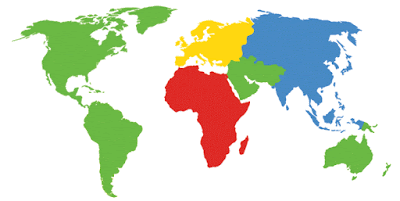Emerging Markets: Week Ahead Preview
(from my colleague Dr. Win Thin)
EM FX gained a little traction on Friday, but capped a week of steady losses. As the US election and FOMC meeting next month get closer, we believe markets and risk appetite will remain volatile. So far, September data from the US does not suggest any urgency to hike in November, and so we continue to believe that December is most likely for another hike.
Looking at individual countries, South Africa political risk remains high as the feud between Gordhan and Zuma plays out. The Turkish central bank meets, and any jawboning by the government could weigh on the lira. On the other hand, Brazil is likely to continue outperforming, as COPOM is likely to follow up recent fiscal consolidation efforts with the first rate cut of this cycle.
Brazil reports August retail sales Tuesday. COPOM then meets Wednesday and is expected to cut rates 25 bp to 14.0%. Mid-October IPCA inflation will be reported Friday, which is expected to rise 8.3% y/y vs. 8.78% in mid-September. Last week’s cut in fuel prices won’t show up yet, but does suggest falling price pressures ahead. Along with progress on the government spending cap bill, we think developments support a potential 50 bp cut this week.
Colombia reports August retail sales and IP Tuesday. The former is expected at –0.5% y/y and the latter at +3.0% y/y. The economy has softened from both fiscal and monetary tightening, but the recent bounce in oil prices (if sustained) will help boost growth. Inflation peaked and has fallen to 7.3% y/y in September. This is the lowest since December, but remains above the 2-4% target range. We think easing is unlikely until we are well into 2017.
Chile central bank meets Tuesday and is expected to keep rates steady at 3.5%. The bank has been on hold since its last 25 bp hike back in December. Inflation was 3.1% y/y in September, the lowest since January 2014 and within the 2-4% target range for two straight months. The easing cycle is unlikely to start until we are well into 2017, however.
China reports September retail sales and IP Wednesday. The former is expected to rise 10.7% y/y and the latter to rise 6.4% y/y. Q3 GDP will also be reported Wednesday, with growth expected to remain steady at 6.7% y/y. China is also expected to report money and new loan (CNY1 trln expected) data this week, but no date has been set yet. Data has been firm even as price pressures pick up, and so we see no further easing by the PBOC.
Malaysia reports September CPI Wednesday, which is expected to rise 1.8% y/y vs. 1.5% in August. While the central bank has no explicit inflation target, price pressures remain low enough to justify more easing if needed. The bank has not moved since the first (and last) rate cut back in July. Next policy meeting is November 23. If the economy remains weak, we think another 25 bp cut then is possible.
South Africa reports September CPI Wednesday, which is expected to rise 6.3% y/y vs. 5.9% in August. It also reports August retail sales Wednesday, which are expected to rise 0.5% y/y vs. 0.8% in July. The economy remains weak, but the expected pickup in inflation is likely to keep the central bank on hold for now. Next policy meeting is November 24, and rates are likely to be kept steady at 7.0%. Much depends on how the rand is trading then.
Poland reports September industrial (3.6% expected) and construction output (-18.5% expected), PPI (0.2% expected), and real retail sales (7.8% expected) Wednesday. The central bank releases its minutes Thursday, and will be studied for policy clues. At that meeting, Governor Glapinski pushed out the likely start of the tightening cycle into 2018. Next meeting is November 9, no move is expected then.
Taiwan reports September export orders Thursday, which are expected to rise 5.0% y/y vs. 8.3% in August. The recent pickup in the mainland economy is welcome, thought the weak September trade data from China warrants some caution. The central bank left rates steady at 1.375% last month, but we think it is prepared to cut again in December if the economy remains weak.
Central Bank of Turkey meets Thursday and is expected to cut the overnight rate 25 bp to 8.0%. However, the benchmark rate is expected to remain steady at 7.5%. CPI rose 7.3% y/y/. While this was the lowest since May, it is still above the 3-7% target range. The weak lira poses some upside risks ahead, but further disinflation is likely needed before the bank cuts the benchmark rate.
![]()
This post was originally published by Marc Chandler at his blog, marctomarket.com
Copyright © Marc Chandler























